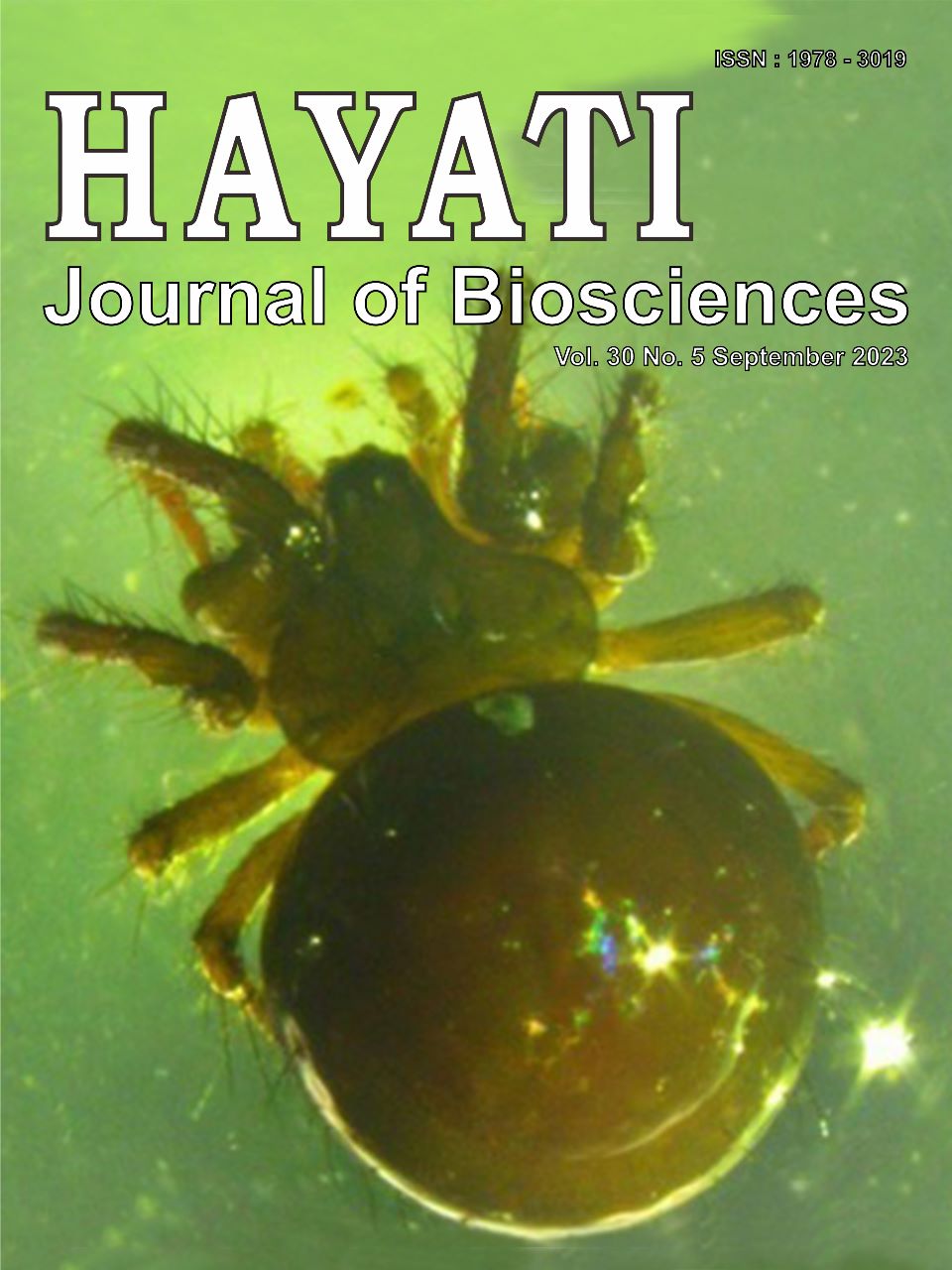Macroarthropod Diversity, Distribution, and Community Structure in Cikarae Cave of the Klapanunggal Karst, West Java
Abstract
Arthropods are the most dominant fauna in cave realms. Ecological studies of cave-dwelling arthropods are essential for cave ecosystem conservation. This study was conducted to determine the ecological aspects of macroarthropods in Cikarae Cave, West Java, focusing on their diversity, distribution, and community structure. The cave passage was divided into three zones based on environmental disparities. Data collection was carried out through direct search and counting methods. Data were analyzed using non-metric multidimensional scaling (NMDS) and several ecological indices (diversity, evenness, and dominance). Nineteen macroarthropod morphospecies were recorded and distributed among 5 classes, 11 orders, and 18 families. Most of these morphospecies were troglophiles. A new troglobitic species (Isopoda: Philosciidae) with a high degree of troglomorphy and exclusive microhabitat was registered. Most morphospecies were collected in Zone 1 (17), followed by Zone 3 (9) and Zone 2 (8). Collected macroarthropods preferred cave walls over floors and ceilings. Overall, Cikarae showed a low diversity index (0.782) and evenness (0.265), while dominance was relatively high (0.692). Trachyjulus tjampeanus, Rhaphidophora sp., and Theridiosomatidae sp. were the most dominant taxa.
Downloads
Copyright (c) 2023 Isma Dwi Kurniawan, Cahyo Rahmadi, Rahmat Taufiq Mustahiq Akbar, Omar Calva, Fezaa Ashelia Zakia Ameliee, Ahmad Zaenal Ependi

This work is licensed under a Creative Commons Attribution-NonCommercial 4.0 International License.
HAYATI J Biosci is an open access journal and the article's license is CC-BY-NC. This license lets others distribute, remix, tweak, and build upon author's work, as long as they credit the original creation. Authors retain copyright and grant the journal/publisher non exclusive publishing rights with the work simultaneously licensed under a https://creativecommons.org/

























.png) IPB University
IPB University Department of Biology
Department of Biology The Indonesian Biological Society
The Indonesian Biological Society 

